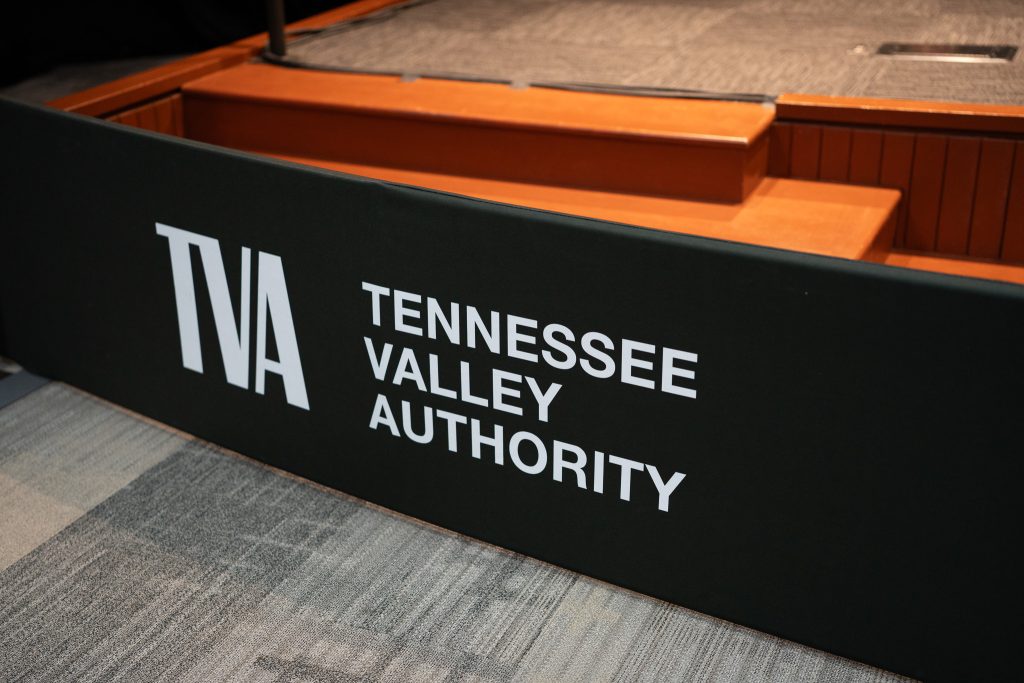Across Appalachia
South Carolina: Steelworkers Oppose DuPont’s Bid to Clean up Savannah Nuclear Site
The United Steel Workers (USW) have come out in opposition to DuPont’s effort to secure a $7.5 billion Dept. of Energy (DOE) contract to manage and clean up the Savannah River nuclear weapons site near Aiken, SC. In a letter to Samuel Bodman, US Secretary of Energy, the USW argued that “DuPont has an abysmal record in the area of worker and community safety, and is one of the major polluters in the US. Hiring DuPont to manage and clean up the Savannah River Site is tantamount to hiring a wolf to guard a hen house.”
Representing 1,800 workers at DuPont and 5,000 DOE workers at various plants and nuclear facilities, the USW have an intimate knowledge of the nuclear industry and how DuPont treats workers and surrounding communities.
The USW pointed out that DuPont is currently under investigation by the EPA, and has been subpoenaed by the Environmental Crimes Section of the US Dept. of Justice, in connection with the company’s potentially harmful C8 chemical that has contaminated water supplies across the nation. Dupont stands accused of withholding important information about the chemical’s health and environmental effects and recently had to settle a multi-million dollar lawsuit for C8 contamination in West Virginia.
Notably, DuPont was forced to abandon its previous operations at the same Savannah River Site in 1989, after its operational and safety record came under heavy criticism from the DOE. The USW believe that given DuPont’s record of “accidents that could have resulted in cataclysmic events,” contracting with DuPont again, “could put many lives at risk.”
Virginia: Forest Service Rejects Proposed ATV Trail
The Forest Service recently rejected a proposed ATV trail system through what conservation groups call a “biodiversity hotspot” in southwest Virginia, citing numerous environmental concerns. The 28-mile Old Sawmill trail would have run through the Jefferson National Forest in the sensitive Stock Creek watershed, which feeds into one of the world’s most important areas of freshwater mussel diversity. Virginia Forest Watch, the Sierra Club, and the Clinch Coalition were three of the groups opposing the plan.
Clinch District Ranger Doug Jones rejected the proposal after evaluating potential trail impacts and seeking public input. He determined that the trails would have an “unacceptable” impact on water quality, and failed to meet Forest Service criteria for new ATV rails. According to Jones, “The new trail construction… will greatly increase the potential for erosion in the project area,” threatening to disturb a large beaver wetland, a stocked trout fishery, old growth forests, and outdoor enthusiasts who currently enjoy the area.
West Virginia: Governor Pushing Coal Conversion Plant
In his new energy plan, Gov. Joe Manchin is pushing for a new coal conversion plant in the state. The plant would process solid coal into a number of synthetic fuels, including diesel. The proposal is part of a recent trend billing “Clean Coal” as a means of reducing gas prices and American dependence on foreign oil.
“With an estimated 50 billion tons of coal reserves in WV that could make up to 3 barrels of liquid fuel per ton, it just makes sense for us to take our efforts to the next level,” said Manchin. The Defense Department would likely be the biggest consumer of the synthetic fuel produced.
Despite all the praises sung for the technology, including claims of reduced emissions, environmental groups remain deeply skeptical of the push for “Clean Coal”. “There is no such thing as clean coal, it’s dirty when you mine it. It’s dirty when you burn it. It’s dirty when you dispose of the waste. It’s just dirty,” says Cindy Rank of the WV Highlands Conservancy.
The coal to diesel process requires massive amounts of water, and produces thousands of tons a year of sulfur dioxide, carbon dioxide, hydrogen sulfide, slag, and other solid and hazardous wastes. According to a memo prepared by researcher John Similie of the Western Organization of Resource Councils, it would also do little to offset foreign fuel imports.
Kentucky: Report Names Kentucky’s 2 Largest Forests Among Most Endangered In Nation
The Daniel Boone National Forest and the Land Between the Lakes were high on the list of imperiled forests in a comprehensive October report released by the National Forest Protection Alliance, a national coalition of 137 forest protection groups. In addition to the 12 “Most Endangered” list, the report includes an economic analysis of the Federal Government and Forest Services’ ill conceived push for more industrial logging, exemplified in Bush’s Healthy Forest Initiative.
The threats to the health of the Daniel Boone National Forest are many, including widespread tree farming, mountaintop removal and deep coal mining, resort and industrial development, major road projects. These threats have earned the Boone forest a slot among the 12 most endangered national forests in the nation.
In all, the projects currently threatening the Boone would cover 124 square miles of forest and would result in the construction of over 200 miles of new roads. The Forest Service is also promoting aggressive logging and increased motorized recreation in the Land Between the Lakes, placing it on the list of the nation’s most threatened forests as well.
“Kentuckians should stand up and take notice that the Forest Service’s ‘extraction at all costs’ agenda is endangering our clean water, rare species, cultural heritage, and recreation from one end of the state to the other,” said Perrin DeJong of Kentucky Heartwood in reaction to the findings.
The America’s Endangered Forests: Lumber, Landfill or Living Legacy? report can be viewed at www.forestadvocate.org/endangered/index.html.
Georgia: Broadening Coalition Raises Stakes As Proposed I-3 Interstate Moves Forward
Increasingly wide-spread and diverse groups have united to form a loose confederation called the Stop I-3 Coalition to fight a proposed 450 mile interstate through the heart of the Smoky Mountains. The proposal recently secured a $1.32 million study in the Federal Transportation Bill. Rep. Charles Norwood and other GA legislators have negotiated for the study, earmarking three times the $400,000 they had initially proposed. Opponents fear that the increased funding signals growing momentum behind the proposal that would link Savannah, GA to Knoxville, TN, cutting an as-yet unspecified route through at least two national parks and innumerable sensitive areas and waterways, threatening “the scenic, economic, and ecological integrity of the Southern Appalachian mountains”.
The bill calls for “a report that describes the steps and estimated funding necessary to designate and construct” the interstate. Opponents fear that the study is just a formality, neglecting substantive input from the mountain communities whose land and economies would be affected because the bill does not spell out the planning process or explicitly require public input as a formal feasibility study by the Federal Highway Administration would.
Now on the offensive, the Coalition is calling on Washington to redirect the $1.3 million for the study to “where it is truly needed – to rebuilding the Gulf Coast.” The group suggests that Congress should take the I-3 money and put it toward fixing I-10.
The group also maintains that “Congress should take another look at the assumptions it used in planning for new highways…in light of the fact that dwindling oil supplies and rising prices in the next few decades will make it unnecessary to build many of the new road projects funded in the bill, including interstate I-3.”
Alabama: Conservationists Fight Dam on the Duck River
Wild South, the Alabama Environmental Council, and the Black Warrior Riverkeepers are fighting an ongoing battle to stop a dam on the Duck River, one of Alabama’s last free-flowing headwater tributaries of the Black Warrior. The dam was first proposed in 1996 and halted by a lawsuit by these groups. The lake would be approximately five miles long and destroy 500 acres of forest.
The City of Cullman is pushing the proposal, which is billed as an additional water source for Cullman County. Critics of the proposal argue that there are alternative water sources available and that backers of the dam have used flawed projections about the future need for more water. Dams disrupt the ability of fish to migrate, decimate mussel species, and act as holding reservoirs for nutrients and polluted runoff from surrounding communities and farms.
Excessive agricultural nutrients cause Milfoil and other aquatic plants to explode in growth and choke out lakes and back-waters in Alabama. Some critics fear that lakeshore developers, profiteers and speculators are behind the $50 million dollar proposal.
North Carolina: Net metering comes to North Carolina
Making your own electricity and running your meter backwards – wouldn’t that be a sight for sore eyes (and pocketbooks) at a time of skyrocketing energy costs? North Carolina has just joined 39 other states and the District of Columbia in allowing “net metering,” which will allow people with grid-tied renewable energy systems to run their meter backwards when they are producing more electricity than they are consuming.
Effective January 1, 2006, customers of Dominion, Duke and Progress power companies who want to be small, renewable energy generators – up to 20 kilowatts for residential and 100 kilowatts for commercial – can connect to the grid, and then generate and store excess generation on the grid for later use. Homeowners, farmers and businesses with small renewable energy generation systems will now have a choice between supplying energy for the NC GreenPower program or using the new net metering rules. The North Carolina Utilities Commission (NCUC) issued their net metering order in late October, a ruling long sought after by the NC Sustainable Energy Association (NCSEA) and the NC Solar Center.
For more information about net metering, contact Richard Harkrader, NCSEA Policy Chair, at rharkrader@mindspring.com.
Tennessee: Scientists, Local Officials To Propose Conservation Policies for the Cumberland Plateau
Researchers at the University of the South, with the support of the Model Forest Policy Program, hosted three conferences on the Cumberland Plateau to facilitate an effort by local public officials to evaluate existing policies and propose new policies that would help promote resource sustainability, environmentally-sensitive economic growth, and biodiversity conservation. A major catalyst for the workshop was Governor Philip Bredesen’s Tennessee Heritage Conservation Trust Fund and its initial $10 million appropriation, which he announced in his 2005 “State of the State” address.
More than sixty participants attended the first conference on September 28th that included county and city officials as well as representatives of state and regional agencies. A major theme that emerged, according to conference organizers, was the need to protect the best qualities of the communities and landscapes of the
region as a way of attracting both tourists and new residents.
A concluding conference will bring together participants from the previous workshops, along with state agencies relevant to the future of the Cumberland Plateau.
Based on this final conference, MFPP and University of the South coordinators will craft a white paper for policy makers.
Related Articles
Latest News
More Stories

Leave a comment
Your email address will not be published. Required fields are marked *





Leave a Comment